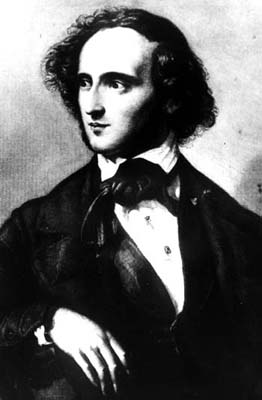|
||
|
Mendelssohn, a child prodigy, began taking piano lessons from his mother when he was six, and had his concert debut at the age of nine. About the same time he began lessons in counterpoint and composition with Carl Friedrich Zelter in Berlin. By the age of fourteen he had written twelve string symphonies, a symphony for full orchestra, a piano quartet and many other smaller works. At the age of sixteen he composed his famous Octet, now regarded as his first masterpiece, and a year later the Overture to A Midsummer Night's Dream. The Trumpet Overture was composed between these two masterpieces, and was later revised for performance in Britain in 1833. The name "Trumpet Overture" was given to it by Mendelssohn's family, reflecting the fact that prior to 1826 the majority of his compositions had been for strings. The opening trumpet fanfare, though not particularly original, was a new musical trope for the teenaged composer. The overture falls into a conventional classical form based on the models of Mozart and Haydn. It is an energetic work with both brilliant and lyrical sections for the strings. The winds and the brass instruments are used more sparingly but effectively. Although it never gained the success of the Octet or the Overture to A Midsummer Night's Dream, it is still often played, and was his father's favourite work. The Trumpet Overture was performed by the Portobello Orchestra on the 1st December 2018, conducted by Sam Jones. back |

